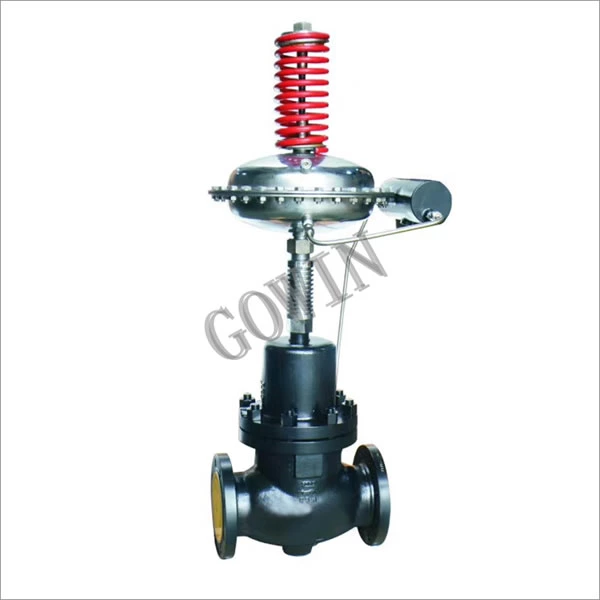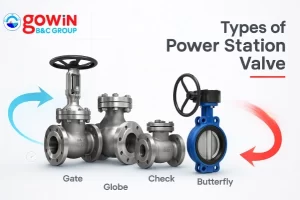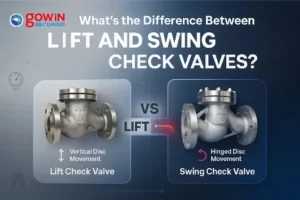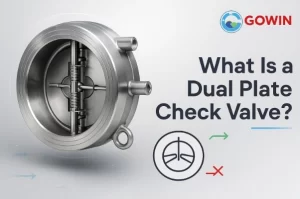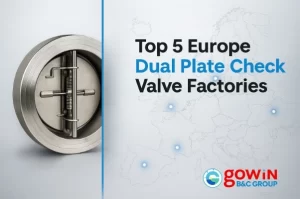Table of Contents
ToggleIf you’re planning to sell or install electric valves in Europe, CE certification isn’t optional—it’s required by law. CE certification shows that your electric control valve meets EU rules for safety, pressure handling, and performance.
Without it, your valves can be stopped at customs, blocked from the market, or flagged for non-compliance.
In this article, we’ll explain what CE certification means, how it ties into EU regulations like the Pressure Equipment Directive (PED), and why it’s critical for any company exporting to Europe.
What is CE Certification for Electric Valves?
CE certification is a legal mark that shows a product meets European Union health, safety, and environmental protection requirements. For an electric control valve, this includes how it handles pressure, electrical safety, and how it performs in automated systems.
A CE certification electric flow control valve means the product has gone through risk assessment, meets the right EU directives, and comes with technical documentation to back it up. It tells buyers, regulators, and installers that the valve is safe and approved for use across the European Economic Area (EEA).
If your product doesn’t carry the CE mark, it can’t legally be sold or installed in EU countries—no matter how well it performs.
The Pressure Equipment Directive (PED) and Valve Compliance
The Pressure Equipment Directive (PED) is a key regulation that electric valves must follow to be sold in the EU. It sets safety standards for any equipment that operates under pressure—including electric control valves.
If your valve handles fluids at a pressure above 0.5 bar, PED likely applies. The directive covers how the valve is designed, tested, and documented.
Depending on the pressure, fluid type, and pipe size, your product may fall into one of several risk categories—each with different requirements for conformity assessment and quality control.
If your valve falls into a higher risk category, a notified body may need to review and certify it before it gets the CE mark.
Without meeting PED rules, a CE certification electric control valve won’t pass inspection or make it past customs in Europe.
High-performance control valves engineered to international standards (ASME, API, JIS, BS, DIN). Available in sizes from 3/4″ to 72″ with pressure ratings up to 42.0 MPa. Suitable for water, oil, and gas applications with temperature range from -196℃ to 650℃.
Explore ProductEuropean Valve Standards You Must Follow
To meet CE requirements, your electric valve must also comply with specific European valve standards. These technical standards support the safety and performance claims made during certification.
Some key standards include:
- EN 1349: Applies to industrial process control valves, covering design, function, and performance
- EN 12266‑1: Outlines how valves should be tested to ensure they hold pressure and stay structurally sound.
- EN ISO 5211: Standard for actuator mounting, relevant for electric valve control
- EN 61508 / EN 61511: Apply when valves are part of functional safety systems under pressure, often requiring SIL-rated components
Following these standards helps ensure your CE certification electric control valve aligns with EU regulations and makes it easier when exporting to Europe.
Why Non-Compliance Blocks Market Access
Trying to sell or ship a valve into Europe without CE certification is a major risk. If your product doesn’t meet EU requirements, it can be stopped at the border, rejected by buyers, or even recalled after installation.
Here’s what’s at stake if your CE certification electric control valve doesn’t comply:
- Customs delays or refusals: Non-CE valves can be blocked from entering the EU
- Legal issues: You may face fines or product recalls under EU product safety laws
- Buyer hesitation: Distributors and engineers prefer CE-marked products to avoid liability
- Project rejections: Your valve may not be accepted in EU-funded or regulated infrastructure projects
Planning to sell in Europe? CE certification is a must—it gives your product legal access to the EU market.
Getting Your CE Certification Right
To properly certify an electric control valve for the EU market, you’ll need more than just a label. CE certification involves proving your product meets the right directives—like the Pressure Equipment Directive (PED)—and preparing documentation to back it up.
Here’s what’s typically required:
- Risk assessment – Identify potential hazards in operation and design
- Technical documentation – Include drawings, material specs, test results, and compliance checks
- Declaration of Conformity – A formal statement that your valve meets EU requirements
- Involvement of a notified body (if required) – For higher-risk categories under PED
If you’re sourcing valves, make sure your supplier provides valid CE documentation. For manufacturers, staying up to date with changes in EU laws and European valve standards is key to staying compliant.
CE Certification Electric Control Valve: Conclusion
CE certification isn’t just a label—it’s a legal requirement for any electric control valve sold or installed in the EU. To sell electric control valves in Europe, you need to meet PED requirements, follow EU valve standards, and back it all with proper certification.
If you’re looking for world-class quality CE-certified electric control valves built to meet EU regulations, look no further than GOWIN. Visit our website or contact us today for a quote!
Resources
- CE Marking Official Information – European Commission
- Pressure Equipment Directive (PED) – European Commission
- EN 1349: Industrial process control valves – iTeh Standards
- ISO 5211: Part-turn actuator attachments – International Organization for Standardization (ISO)
- Functional Safety (IEC 61508 & IEC 61511) – International Electrotechnical Commission (IEC)


